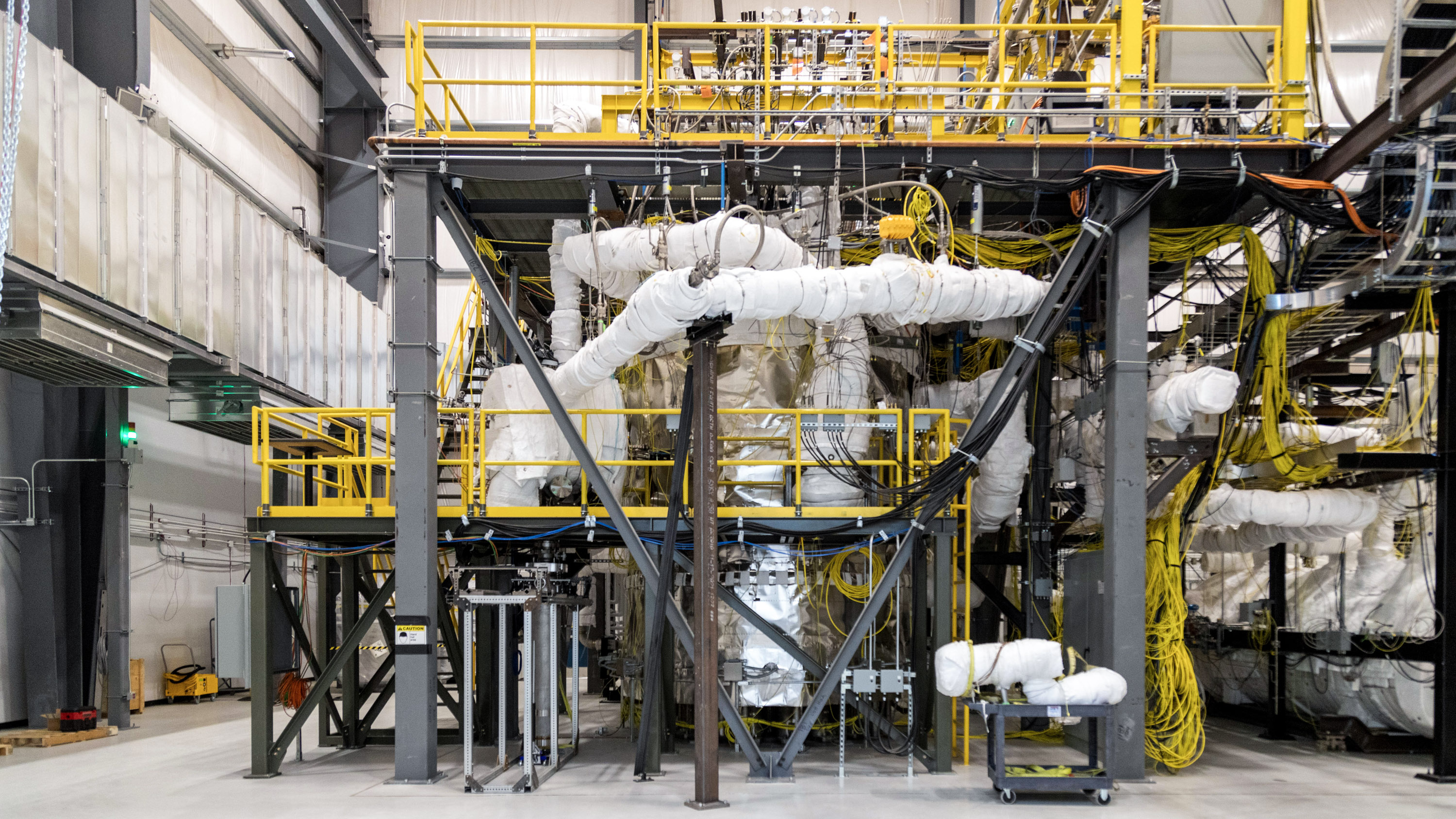Startup Kairos Power has reached two milestones recently for its molten salt-cooled reactor.

For more than a month in total, 12 metric tons of molten salt coursed through pipes at Kairos Power in Albuquerque, New Mexico.
The company is developing a new type of nuclear reactor that will be cooled using this salt mixture, and its first large-scale test cooling system just completed 1,000 hours of operation in early January. This is the second major milestone for Kairos in recent weeks. In December, the US Nuclear Regulatory Commission granted a construction permit for the company’s first nuclear test reactor.
Nuclear power plants can provide a steady source of carbon-free energy, a crucial component in addressing climate change. But recent major nuclear installations have been plagued by delays and skyrocketing budgets. Kairos and other companies working on advanced reactor designs hope to revive hopes for nuclear power by presenting a new version of the technology that could cut costs and construction times.
Kairos’s technology and construction approach are “just fundamentally different” from current commercial reactors, says Edward Blandford, cofounder and chief technology officer of Kairos.
Today, nearly all commercial nuclear plants use the same type of enriched uranium as fuel to generate electricity through nuclear fission reactions, and temperature is controlled with a cooling system that uses water.
But a growing number of companies are working to tweak this formula in an effort to improve on cost and safety. In the case of Kairos, the company plans to use an alternative fuel called TRISO, which is made from tiny uranium-containing kernels that can be embedded in graphite casings. TRISO fuel is robust, able to resist high temperatures, radiation, and corrosion. In addition, the reactor’s cooling system uses molten salt instead of water.
Molten salt could be a huge help in making safer nuclear plants, Blandford says. The cooling system in water-cooled reactors needs to be kept at high pressure to ensure that the water doesn’t boil off, which would leave the reactor without coolant and in danger of overheating and running out of control. It’s technically possible to boil salt, but it could only happen at very high temperatures. So those high pressures become unnecessary.
Molten-salt nuclear reactors were developed in the 1950s but were largely shelved as the industry moved toward water-cooled designs. Now, with a growing need for low-carbon power, “there’s a lot of interest in these technologies again,” says Jessica Lovering, cofounder and executive director of the Good Energy Collective, a policy research organization that advocates for the use of nuclear energy. New reactor technology options could help avoid some of the fears around the safety of water-cooled reactors, and they can also generate electricity more efficiently.
Technology has changed a lot in the past seven decades, and molten-salt reactors never made it to large-scale commercial operation. So there’s still plenty of testing to be done before this kind of cooling system can be put to work in the highly controlled environment of a nuclear reactor. That’s where Kairos’s engineering test unit comes in. It’s the world’s largest system built to circulate Flibe, a fluoride-based salt coolant.
The system uses electric heaters to simulate the heat that would be generated by nuclear reactions in the finished reactor. Tests involve pumping a Flibe mixture through a cooling loop while engineers monitor the temperature throughout the system and the purity of the salt along the way. The company has also tested what it would be like to refuel the reactor, and how power coming out of the system can be monitored and adjusted.
Building an entire cooling system that won’t ever be used in a nuclear reactor is a considerable investment of time, money, and resources, but this approach of taking baby steps could help Kairos succeed in introducing a new nuclear technology—a historically difficult task, says Patrick White, research director at the Nuclear Innovation Alliance, a nonprofit think tank.
“One of the challenges with nuclear is that usually, the first step is to design the reactor on paper, and the next step is build the whole thing,” White says. Kairos is trying a different path, testing out components more along the way to help speed up development and avoid getting stuck in late-stage construction.
Kairos is making progress on construction, too. The company received approval in December from the NRC to build Hermes, its first nuclear test reactor. Hermes will produce about 35 megawatts of thermal power (today’s commercial reactors typically produce around 1,000 megawatts of electricity). It’s planned for completion as soon as 2026.
Several other companies are also using molten salt or TRISO fuel in their advanced nuclear designs. X-energy, based in Maryland, is developing a gas-cooled reactor that uses TRISO fuel, and TerraPower and GE Hitachi Nuclear Energy are developing a sodium-cooled reactor that uses molten salt to store energy.
There’s still a long road ahead before Kairos’s design and other advanced reactors can make it onto the grid. The company plans to build at least two more large-scale test cooling systems before putting the pieces together for Hermes, Blandford says.
The company will also need to win an operating license for its Hermes demonstration reactor, the second of two major regulatory steps it’ll go through with the NRC. Next comes Hermes 2, which will include two reactors that are similar in scale and design to the first Hermes reactor, plus a system to transform the heat generated into electricity. Finally, the company will move on to larger, commercial-scale reactors.
All of that will take some time, but Kairos and others feel the result will be worth it. “With our technology, it is unique,” Blandford says, “and it does open up unique opportunities to explore spaces that other technologies have not.”
Correction: An earlier version of this article included an incorrect name for Kairos Power’s Hermes demonstration reactor.
Note: This article have been indexed to our site. We do not claim legitimacy, ownership or copyright of any of the content above. To see the article at original source Click Here













